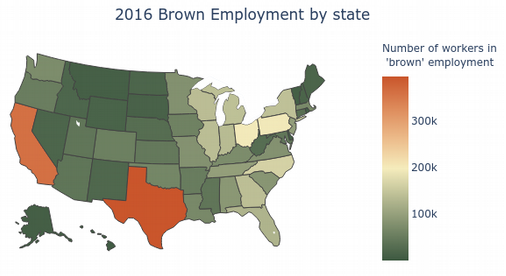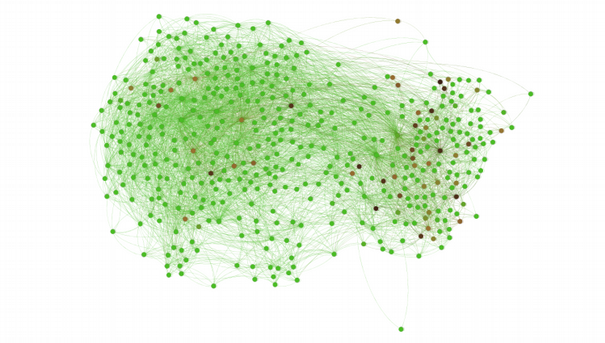Labour Market Impacts of the post-Carbon Transition: Applications to China and India
- Researcher: Anna Berryman
- Academic Supervisors: Prof. Doyne Farmer, Dr. Penny Mealy, Dr. Maria del Rio-Chanona
- Industrial Supervisors: James Foster, Alice Lazzati, Sarah Metcalf
Background
The transition to a post-carbon world will undoubtedly involve a transformation of production structures and economic activities around the world. A key question spanning both climate and development policy is the impact such a transformation will have on employment. We will look at China and India, which have significant proportions of their workforce involved in emissions-intensive activities, as well as providing insights into what impact the post-carbon transition might have on the UK labour market.
Understanding the employment impacts is important in the transition to a post-carbon economy because workers displaced by these impacts must be considered for a smooth transition. This work will provide evidence-based insights into the employment impacts for both the decrease in demand for emissions-intensive occupations, as well as the increased demand for green occupations. Possibly retraining strategies and policy impacts will also be investigated.
In this project, we will improve the ability of the existing labour market network model to predict occupation-level unemployment impacts associated with labour market shocks based on historical data. Second, we will draw on available data from China and India to characterise the labour market context in these developing countries. We expect this data to be provided by key country partners associated with the EEIST project.
The associated mini-project used the existing labour market network model to analyse the employment impacts associated with a transition away from emissions intensive industries in the United States. This highlighted that considering geography will be important when looking at the post-carbon transition and how it will affect the labour market, as emissions-intensive jobs are highly geographically concentrated as we can see in Figure 1.

Figure 1: Employment in 2016 in emissions-intensive occupations in the US.
Progress
Previous studies aiming to quantify the employment impact of environmental or emissions reduction policies often rely on general equilibrium models that assume labour to be unrealistically flexible. The existing labour market model is different because it uses a network to model the relationship between occupations and then models workers’ (agents’) behaviour within the network. So far, we have extended the existing labour market network model to include on-the-job search, multiple applications, and wage dynamics.
At present, the occupational mobility network (in Figure 2) captures moves that workers have previously made. Workers moving around the occupational mobility network are motivated by wages and other factors and restricted by their ability to do other jobs. Now that we have extended the model, we hope to be able to infer another network, which captures the ease of transitioning between different occupations. Since wage dynamics and these other factors are captured by the model, we hope to use maximum likelihood estimation to infer this other network.

Figure 2 – Occupational Mobility Network (464 nodes and edges between occupations if a worker made this transition in the US between January 2010 and January 2017; nodes are coloured green or brown based upon emissions)
Future Work
Once we have this second network, which captures the ease of transitioning between occupations, we hope to be able to use available data on employment and vacancies in order to predict job transitions. Later in the project, with data available for China, India, and the UK, we will apply the model to give some insights into how the post-carbon transition might affect the labour market in those countries.


